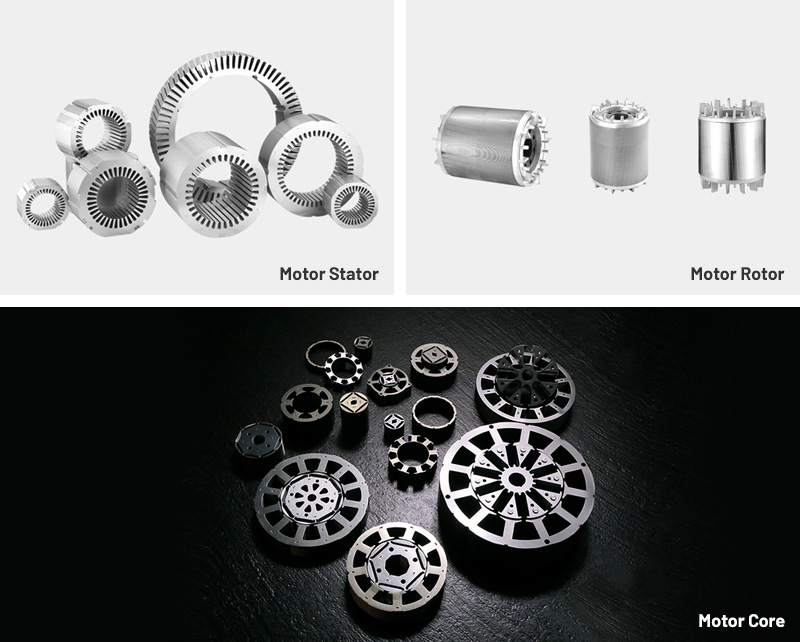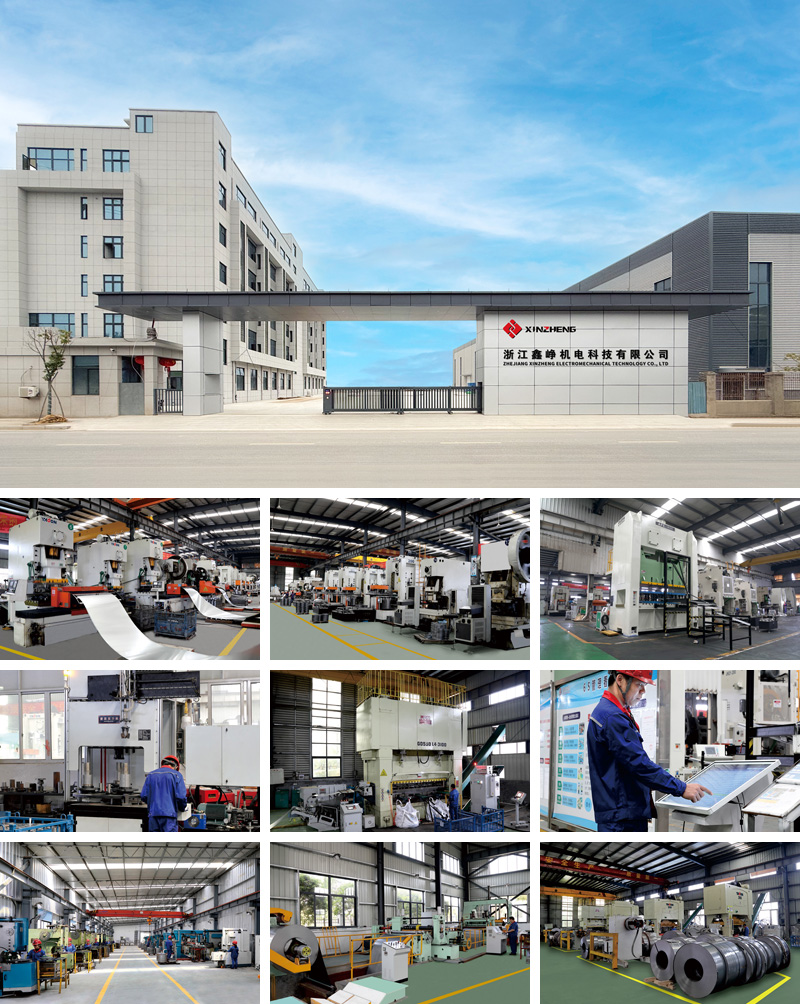The rise of compact electric motors across industrial automation, consumer electronics, automotive auxiliary systems, and robotics has significantly increased the demand for high-performance rotor components. Small motors are critical in precision devices, from miniature pumps and fans to electric actuators, requiring optimal efficiency, low noise, and consistent torque under variable load conditions.
Small motor rotor laminations are at the core of this performance, directly affecting electromagnetic efficiency and thermal behavior. With increasingly stringent energy efficiency regulations, manufacturers are prioritizing laminations that reduce core losses, improve magnetic flux conduction, and ensure reliability in continuous operation.
rotor laminations form the central magnetic path in small motors, guiding flux generated by the stator and facilitating torque production. Several technical principles underpin their design:
Rotor laminations ensure controlled magnetic flux within the rotor, preventing localized saturation and enhancing torque stability. Optimized lamination geometry allows uniform flux distribution and reduces harmonic losses, crucial in compact motors with limited air-gap space.
Eddy currents generate unwanted heat, reducing efficiency and increasing thermal stress on motor windings. Laminations are insulated from each other and manufactured with thin electrical steel to minimize these currents, enhancing overall efficiency and operational stability.
Small motors often operate at high rotational speeds. Rotor laminations must withstand centrifugal forces without deformation and maintain magnetic performance across temperature variations. Proper stacking, bonding, and precision tolerances ensure mechanical integrity, reducing vibration and extending motor lifespan.
Small motor rotor laminations are typically produced from high-grade, non-oriented electrical steel. Key material properties include:
Low core loss for energy-efficient operation
High magnetic permeability for consistent torque output
Adequate electrical resistivity to limit eddy currents
Mechanical strength to resist centrifugal forces at high RPM
Lamination thickness generally ranges from 0.20 mm to 0.35 mm depending on rotor size and motor power.
Slot geometry impacts rotor bar placement, current distribution, and thermal performance. The design must ensure:
Uniform rotor bar filling for consistent magnetic performance
Minimized noise and vibration
Efficient thermal dissipation during continuous operation
High-speed stamping produces laminations with tight dimensional tolerances. Critical quality factors include:
Minimal burr formation to prevent insulation damage
Accurate tooth width for consistent magnetic flux
Straight edges and uniform diameter for precise stacking
Laminations are stacked via interlocking tabs, welding, or adhesive bonding. Proper stacking ensures:
Mechanical rigidity
Reduced vibration and torque ripple
Accurate rotor bar alignment
Laminations feature inorganic or hybrid coatings to prevent interlaminar shorts and improve thermal performance. Uniform coating thickness enhances electrical insulation, reduces core loss, and ensures long-term reliability.
Several factors influence small motor rotor lamination performance:
Steel Grade Consistency – Variations can increase core loss and reduce magnetic efficiency.
Dimensional Accuracy – Small deviations affect rotor balance and torque stability.
Insulation Quality – Poor coating adhesion increases eddy currents and thermal stress.
Stacking Precision – Misaligned laminations cause vibration, noise, and torque ripple.
Tooling Maintenance – Worn dies reduce precision and can introduce burrs, affecting performance.
Selecting reliable suppliers ensures consistent lamination quality:
Material Traceability: Certification of steel grades and magnetic properties.
Precision Tooling Capability: Ability to produce high-accuracy laminations at volume.
Quality Control Systems: Dimensional verification, core loss testing, and coating inspection.
Production Stability: Consistent output to support large motor production runs.
Standards Compliance: Adherence to IEC and ISO guidelines for electrical steel and motor laminations.
A stable supply chain reduces variability, enhances motor efficiency, and lowers production costs.
Challenges in producing small motor rotor laminations include:
Material Cost Fluctuations – Electrical steel prices can vary, impacting production budgets.
Tool Wear and Burr Formation – Die wear leads to dimensional inaccuracies and potential insulation damage.
Thermal Stress – Repeated heating cycles may compromise lamination insulation or structure.
Rotor Imbalance – Misaligned laminations generate vibration and acoustic noise.
Efficiency Constraints – Small motors must meet strict energy efficiency standards, leaving minimal tolerance for manufacturing errors.
Small motor rotor laminations are applied in numerous sectors:
Consumer Appliances: Fans, pumps, vacuum cleaners, and compact compressors
Industrial Automation: Robotics, actuators, conveyors requiring precise motion control
Automotive: Auxiliary motors, cooling fans, and small electric pumps
Medical Equipment: Precision pumps and drives in diagnostic or therapeutic machines
Electronics: Compact devices where efficient, low-noise motors are required
In each application, high-quality laminations contribute to reduced energy loss, stable torque, and longer operational life.
Advanced steel grades reduce hysteresis and eddy-current losses, supporting higher efficiency standards for compact motors.
Hybrid inorganic–organic coatings improve thermal tolerance and long-term insulation reliability.
Laser-cut laminations allow tighter tolerances and reduced mechanical stress, particularly for prototypes or intricate designs.
Automated stacking and real-time inspection systems enhance consistency, traceability, and yield in mass production.
Recycling electrical steel, minimizing scrap, and using eco-friendly coatings are becoming standard practices in small motor lamination production.
Q1: What makes small motor rotor laminations different from larger motor laminations?
They are designed for compact motors, emphasizing precise geometry, low core loss, and high magnetic efficiency in limited space.
Q2: What is the typical lamination thickness?
Thickness generally ranges from 0.20 mm to 0.35 mm, depending on motor size and application requirements.
Q3: How critical is insulation coating?
Proper insulation minimizes eddy currents, reduces heat, and ensures stable long-term performance.
Q4: Can small motor rotor laminations handle high-speed operation?
Yes, precision stamping, stacking, and material selection ensure mechanical and thermal stability even at high RPMs.
Product Category

Comprehensive Strength


Copyright © Zhejiang Xinzheng Electromechanical Technology Co., Ltd. All Rights Reserved.
This website uses cookies to ensure you get the best experience on our website.